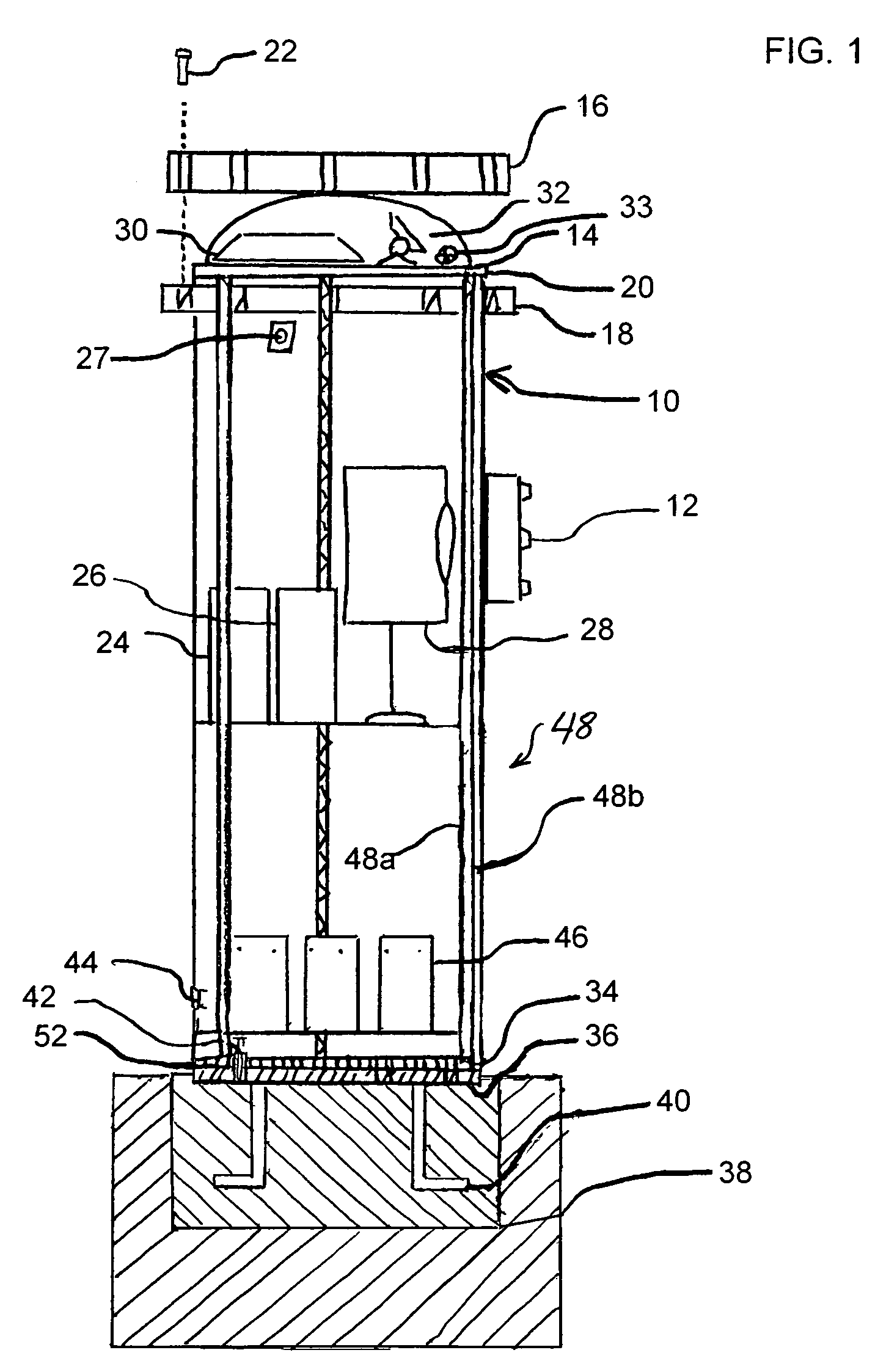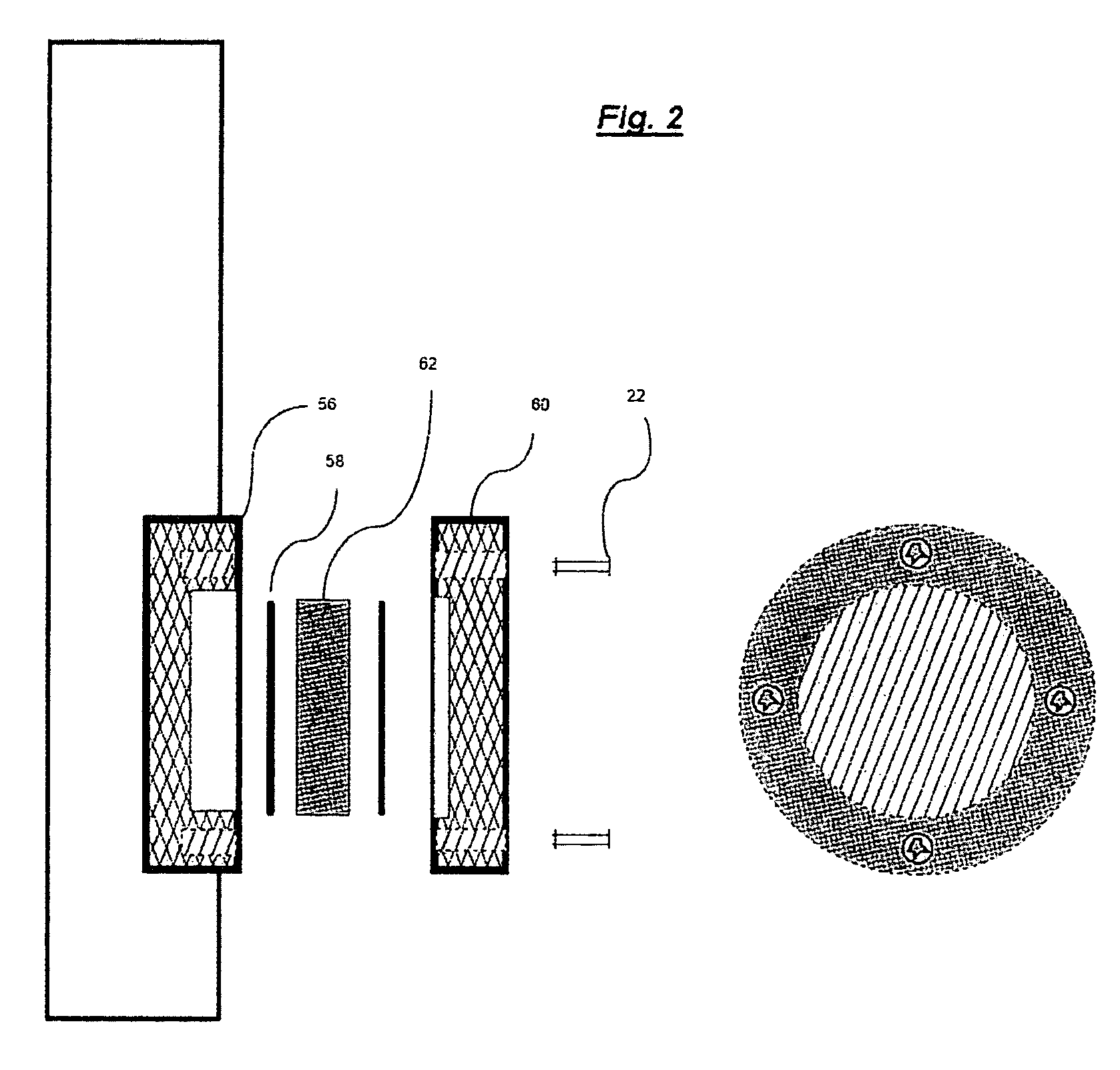Remote video monitoring of non-urban outdoor sites
a remote video and outdoor site technology, applied in the field of remote video monitoring, can solve the problems of large impact on the lawfulness of conduct, insufficient financial and other resources to staff the remote site, and inconvenient use, so as to reduce the number of sta
- Summary
- Abstract
- Description
- Claims
- Application Information
AI Technical Summary
Benefits of technology
Problems solved by technology
Method used
Image
Examples
Embodiment Construction
[0029]Referring now more particularly to the drawings, and to the preferred embodiment of the invention here presented by way of illustration, FIG. 1 illustrates a video monitoring unit (VMU) housing 10 (which in one embodiment could be ⅜″ schedule 40 stainless steel) that is mounted to a concrete footing 38 which is no less than 28″ deep by no less than 18″ in diameter. The concrete footing 38 has been poured with four or more of steel rebar supports 40 extending from the underside of a footing plate 36. Enabling housing 10 to be mounted to the Concrete footing 38 is a housing base 34. The housing base 34 is permanently affixed to the housing 10 and contains 16 or more holes to accommodate a series of mounting bolts 42. Footing gasket 52 creates an air and waterproof seal to the footing.
[0030]The interior of housing 10 includes a chassis on which are mounted various components and electronic systems. In one embodiment, the chassis comprises sleeve 48 that includes 3 platforms 48a h...
PUM
 Login to View More
Login to View More Abstract
Description
Claims
Application Information
 Login to View More
Login to View More - R&D
- Intellectual Property
- Life Sciences
- Materials
- Tech Scout
- Unparalleled Data Quality
- Higher Quality Content
- 60% Fewer Hallucinations
Browse by: Latest US Patents, China's latest patents, Technical Efficacy Thesaurus, Application Domain, Technology Topic, Popular Technical Reports.
© 2025 PatSnap. All rights reserved.Legal|Privacy policy|Modern Slavery Act Transparency Statement|Sitemap|About US| Contact US: help@patsnap.com



